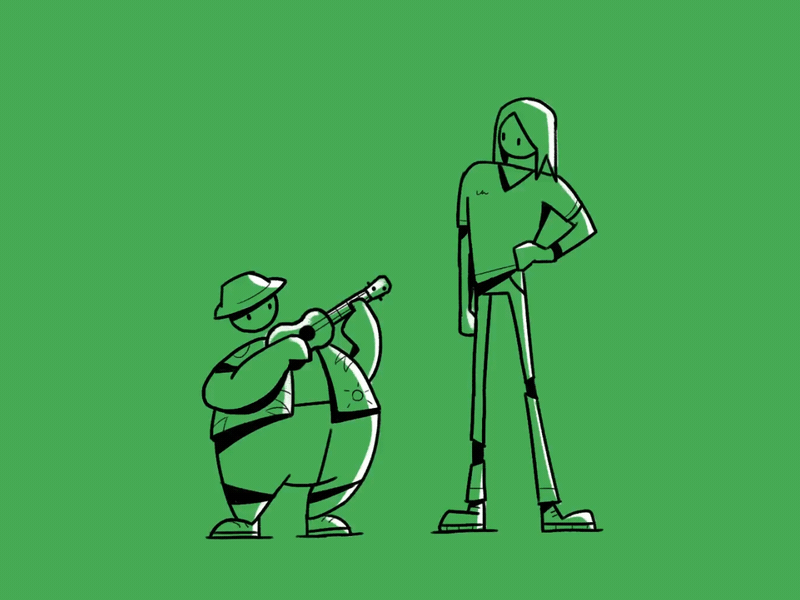How to Combine Design Thinking & Business Thinking in Product Development
“At the end of the day, your job isn’t to get the requirements right — your job is to change the world.” – Jeff Patton, Product Consultant
Living for only getting profit has no much sense. Life and work have more meaning when you do something, not only to get paid but also to bring value to others. Similarly, products created for “making money” become part of the mass-consumerist machine. Nothing special. They are quickly forgotten. They are, and they are not. They live for a while and bring very temporary value.
On the contrary, products created for “giving release for people” are loved, appreciated, and remembered. They meet critics and excitement at the same time. They have both lovers and haters. However, they’re worth attention and evoke the audience’s reaction in both cases.
Driven by the desire to bring value to the world, you enter the game of creators competing to gain more significant influence in the market. The more influence you have, the more opportunities you get to give birth to new creations that can bring even more value to the world and contribute to a sustainable and innovative future.
Design-Thinking in Product Development: Target User & Problem Research
To create a product that “gives release for people,” you need to have information about the target users: their pain points, interests, preferences, hobbies, demographics, favorite brands, online behavior, etc. In other words, you need to conduct in-depth target user research and create personas — imaginative portraits of your target users with a set of data mentioned above. It will allow you to better understand your audience and create a product that addresses their needs and expectations.
It’s the foundation of Design-Thinking — a human-centered approach to digital product development that implies the orientation at the user problem and finding a solution for it. It aims to create products that make people’s lives easier and bring them aesthetical, functional, and emotional values.
According to the design-thinking approach, you should answer the three key questions before digging into the development process:
- What is the problem?
- Who does have this problem?
- How can your product solve this problem?
Answering these questions will help you see a holistic picture of your product’s mission. It allows you to understand a product user experience from the visual and interactional perspectives (what the user must see and feel when using a product). It helps you step closer to an essential understanding of your product as a solution to the user problem. Finding the solution in a product development process includes the following phases:
Empathize with target users. Determine their needs, wants, and perspectives. Create several user personas to crystalize a profound understanding of the main target groups your product should cover.
See the problem through their eyes. Step into the target user’s shoes and define what problems they face in everyday life. Think of how you, as the user, see a problem solution.
Run brainstorming sessions. It’s time to ideate together with your team to find as many creative solutions as possible. Don’t laugh at your teammate’s craziest ideas. Every idea might be a seed that can grow into a full-fledged product.
Create a prototype for your concept. Have you come up with several ideas for your future product as a solution? Build prototypes to test your concepts, prove your ideas, and give up all biases.
Test it with real people. After testing a prototype by yourself, suggest it to real users. It would be best if you gathered a test group of users who might help you approve or disapprove your product hypotheses at the very beginning.
Now, you must be equipped with enough data and insights to start implementing your concept and transforming an idea into the end-product.
Business-Thinking: Market Research and Funding Plan
In the interview for Hacker Noon, Dima Venglinski, CEO and Founder of Fireart Studio, also shares:
“How to combine Design Thinking & Business Thinking in product development? The perfect combination of both lies in the preliminary Product Design Research. It is a detailed market and competitor research that includes the evaluation of risks, costs, and time needed to build a market-ready product… After design research is completed, you get a clear understanding of what is better for the product’s health and what can break the initial concept on the way to its implementation.”
While design-thinking defines your product’s essence, philosophy, and how it will help people, business-thinking is focused on how to implement it most successfully and start the engine of the development, promotion, and revenue-generating process.
The business-thinking approach implies evaluating market coverage, estimating product development and deployment costs, and investigating the market and competitors. Usually, it includes three primary stages:
Target market research. Before entering a new industry, product owners need to know the total addressable market (the total amount of money you can make selling your product). It allows them to forecast revenue growth or gauge the profit potential of a specific industry. This research also includes the investigation of the following market segments:
- Total Available Market (TAM) – the total market demand for your product;
- Serviceable Available Market (SAM) – a part of the overall available market targeted by your product within your geographical area;
- Serviceable Obtainable Market (SOM). It’s the portion of a serviceable obtainable market that you can capture.
Competitor research. Investigate what has already been launched in your niche market. Research competitors and learn from their mistakes and successes. These insights may help you save a lot of time and money. They have probably already tried an approach that you’re thinking about now, and it failed or succeeded. It allows you to define what will work best for your product and just apply it. Competitor research may help you investigate what marketing practices resonate with your target audience so that you can incorporate them into your strategy too. It empowers brands to avoid a lot of market pitfalls and prevent extra-expenses.
Investigation of the funding opportunities. Today, many startups are funded by investors or investment agencies. Others start their journey from crowdfunding platforms. And there are only a few of those who invest their own money into startup launch and scaling. So, founders should estimate different opportunities and decide on the next step: to learn how to pitch a product idea to investors or fund the project on their own.
Intelligent Mix: Design- + Business-Thinking
Combining both design-thinking and business-thinking, you can achieve perfect readiness for product development and deployment a solution in the market. Design-thinking allows you to build a product for people. Business-thinking enables you to bring a concept to reality, expand your reach, and generate profits that will empower your project to scale in the future. While design-thinking is telling you WHAT and WHY, business-thinking is saying HOW.
So, are you ready to combine both and challenge yourself as the product owner? Join the game of creators, as it is here to absorb your ideas and show them to the world.





















